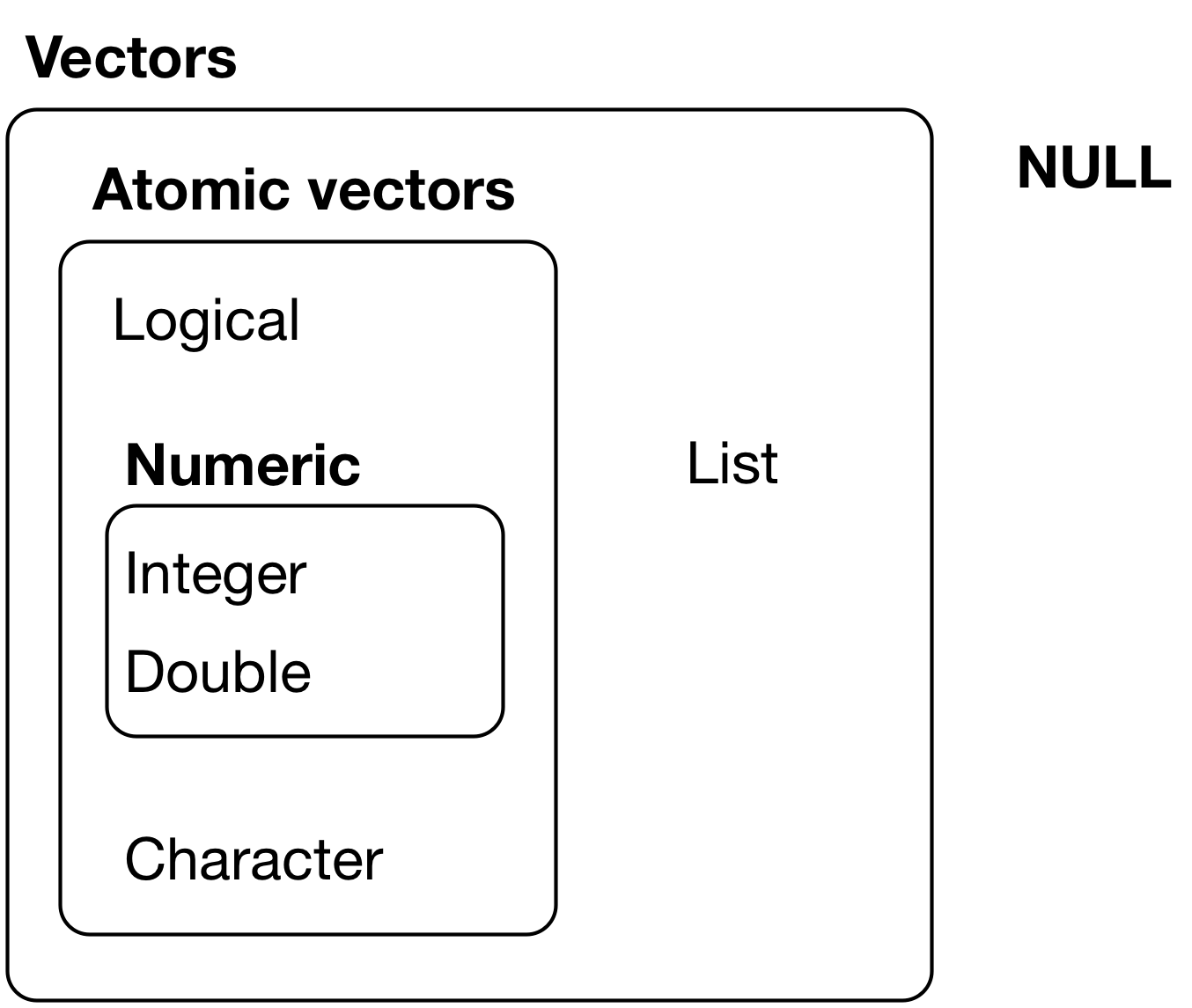13.2 Vector basics
- There are two types of vectors:
- Atomic vectors, of which there are six types:
- logical
- integer
- double
- character
- complex
- raw
- Integer and double vectors are collectively called numeric vectors.
- Lists, at times, are called recursive vectors because lists can contain other lists.
- Atomic vectors, of which there are six types:
- The main difference between vectors and lists:
- Atomic vectors are homogeneous i.e., contain only one type (in my understanding).
- Lists are heterogeneous i.e., can have different types.
- Another related object:
NULL. It is often used to represent the absence of a vector (unlikeNAwhich is used to represent the absence of a value).NULLtypically acts as a vector of length 0.
Figure 20.1: The hierarchy of R’s vector types:

- Two key properties for each vector:
- Its type, which can be determined with
typeof().
- Its type, which can be determined with
- Its length, which can be determined with
length().
Qn: does this imply that the length of a list is the # of elements in a list for example (x1)?
- Vectors can also contain arbitrary additional metadata in the form of attributes.
- Which are then used to create augmented vectors which build on additional behaviour. There are three important types of augmented vectors:
- Factors are built on top of integer vectors.
- Dates and date-times are built on top of numeric vectors.
- Data frames and tibbles are built on top of lists.
- Which are then used to create augmented vectors which build on additional behaviour. There are three important types of augmented vectors: